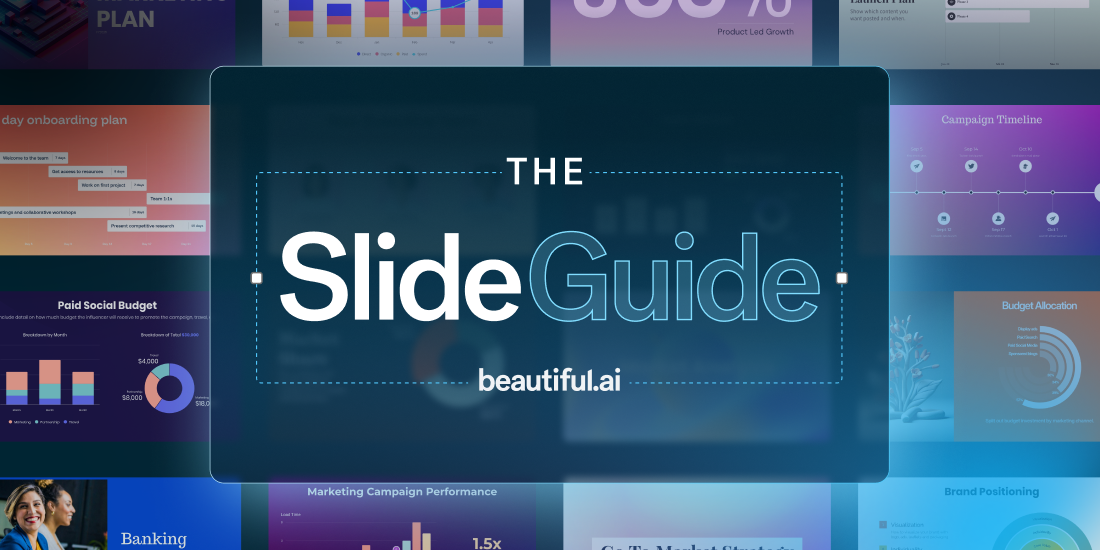
A sales deck is more than slides, it’s your story. It helps you connect with prospects, clarify their problems, and show exactly how you can solve them. Whether you’re pitching to investors, decision-makers, or end users, your deck should be clear, persuasive, and visually engaging. Here’s what every great sales deck should include—and why it matters.
1. Hook them fast
Start with a clean, eye-catching title slide that sets the tone. Include your logo, a powerful tagline, and a visual that instantly signals relevance (for example, “Cut churn by 30% in 90 days”).
The first impression matters. This slide should make your audience think, “Tell me more.”
2. Define the problem
Before diving into your product, show you understand the customer’s world. Describe the challenge they face using data or relatable pain points. This builds credibility and emotional connection.
Example: “Teams waste 20+ hours a week creating presentations from scratch.”
3. Paint the vision
Now show what success looks like once that problem is solved. Use vivid, outcome-oriented language: faster growth, lower costs, happier customers.
Think of this as your “before and after” moment—the gap your product bridges.
4. Present your solution
Introduce your product or service with a clean demo and explain how it solves the problem. Focus on outcomes, not features. Each slide should connect capabilities to a benefit to drive the value home.
An example would be automated workflows reduce manual tasks and as a result teams save 40% of their time.
5. Show what sets you apart
Your audience is likely comparing options. Clearly explain your differentiators and what makes your solution better or unique. This could be proprietary tech, integrations, support, or pricing.
A simple comparison chart or quote from a satisfied customer can help here.
6. Prove it works
Add social proof like case studies, client logos, testimonials, or metrics that show results. Data builds trust and reduces risk, but social proof proves it works.
7. Explain the process
Walk through how you’ll implement your solution—from kickoff to success. A brief timeline, key milestones, and dedicated support signals reliability and structure.
This section reassures the buyer that you’re not just selling, but you’re partnering with them to help reach their goals.
8. Talk numbers (briefly)
When appropriate, include pricing or investment info in a transparent, high-level way. Keep the focus on value: what the customer gets for what they spend.
You can also show ROI calculations or savings estimates to strengthen the case.
9. End with momentum
Close with a clear call to action: schedule a more in depth demo, start a trial, or plan next steps. Reinforce your key value in one sentence that they’ll remember after the fact.
You might opt to include a short team or contact slide to humanize your brand, and give them a reference point for following up.
Putting it all together
A winning sales deck tells a simple, powerful story that identifies a problem, inspires a vision, proves credibility, and ends with a clear next step. While you should consider including some of the above, it’s also important to keep it concise, design for clarity, and always tailor it to your audience. When done right, your deck doesn’t just inform prospects on who you are and what you offer—it converts.

.png)


.gif)


.webp)